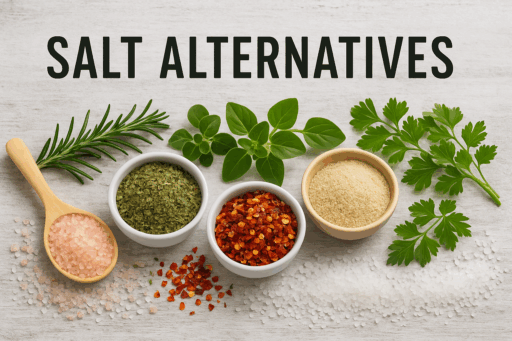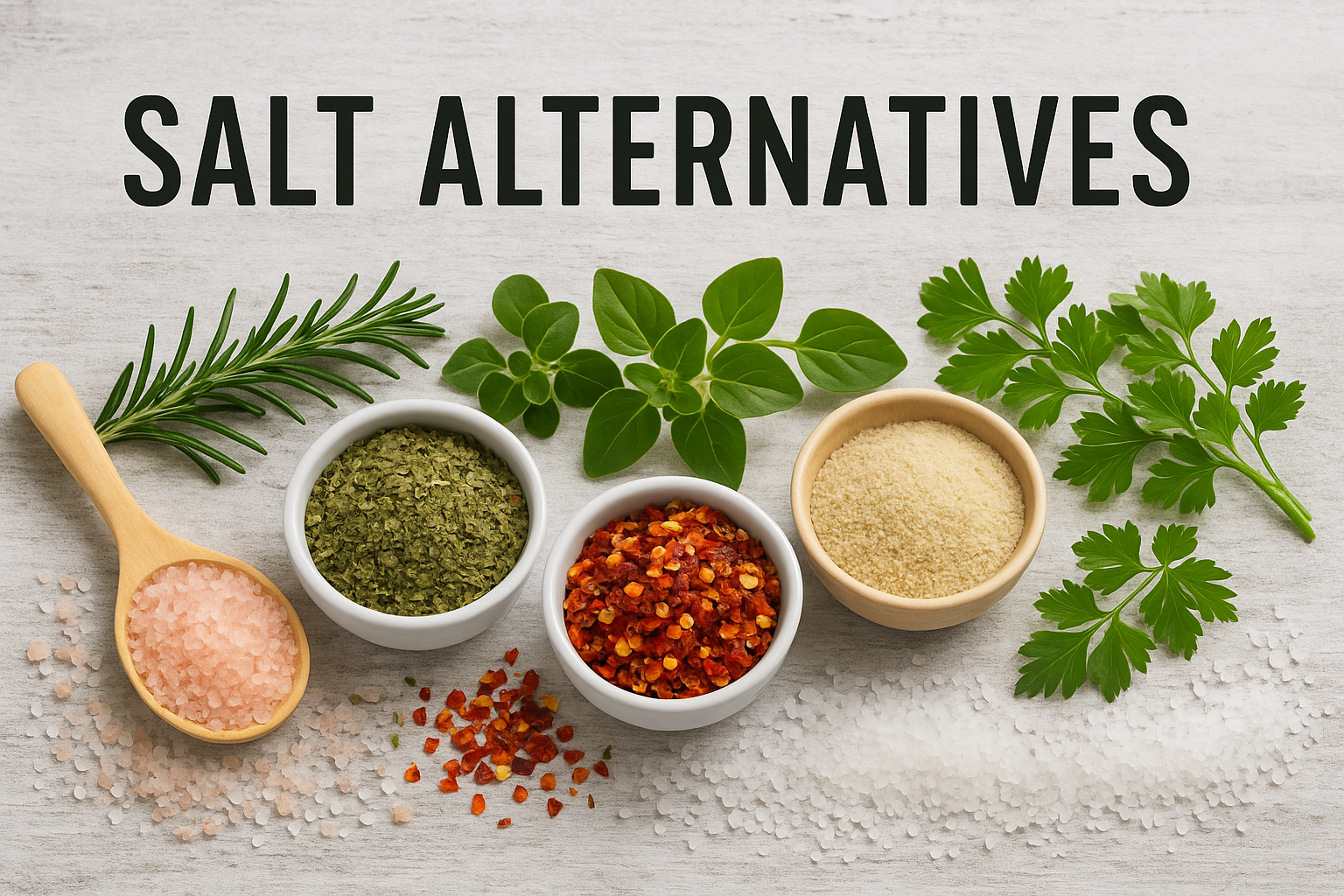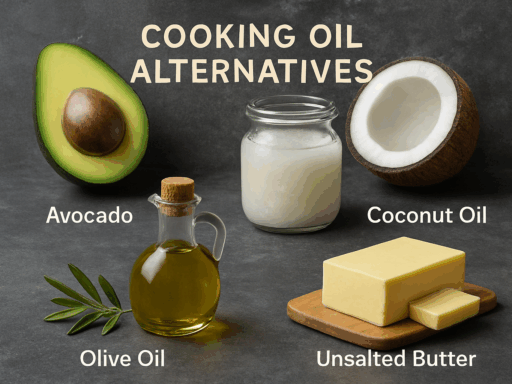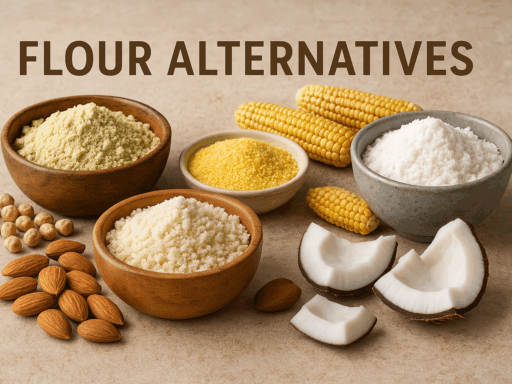Salt is an essential mineral that enhances the flavor of food and supports many bodily functions, but excessive consumption of sodium can lead to high blood pressure, heart disease, and kidney problems. The average person consumes much more salt than the recommended daily intake, leading many to seek out salt alternatives. These alternatives not only provide flavor but can also offer additional health benefits, such as reducing sodium intake, enhancing mineral content, and supporting better cardiovascular health.
In this article, we will explore the best salt alternatives, their sustainability, applications, and challenges. We’ll also examine how these alternatives fit into a broader healthy eating strategy, helping consumers make more informed decisions about flavoring their meals while maintaining optimal health.
Why Are Salt Alternatives Important?
Excessive sodium consumption is one of the most significant dietary contributors to hypertension (high blood pressure), which in turn increases the risk of heart disease, stroke, and kidney failure. The World Health Organization (WHO) recommends that adults consume no more than 2,000 milligrams of sodium per day, but most people exceed this amount, primarily through processed and restaurant foods. Reducing sodium intake by using salt alternatives can help improve heart health, reduce the risk of chronic diseases, and support a more balanced diet.
By using salt alternatives, consumers can enjoy flavorful food without the harmful effects of excess sodium. Many alternatives also provide additional nutrients like potassium, magnesium, and trace minerals, supporting overall health while keeping sodium intake in check.
Top Salt Alternatives and Their Applications
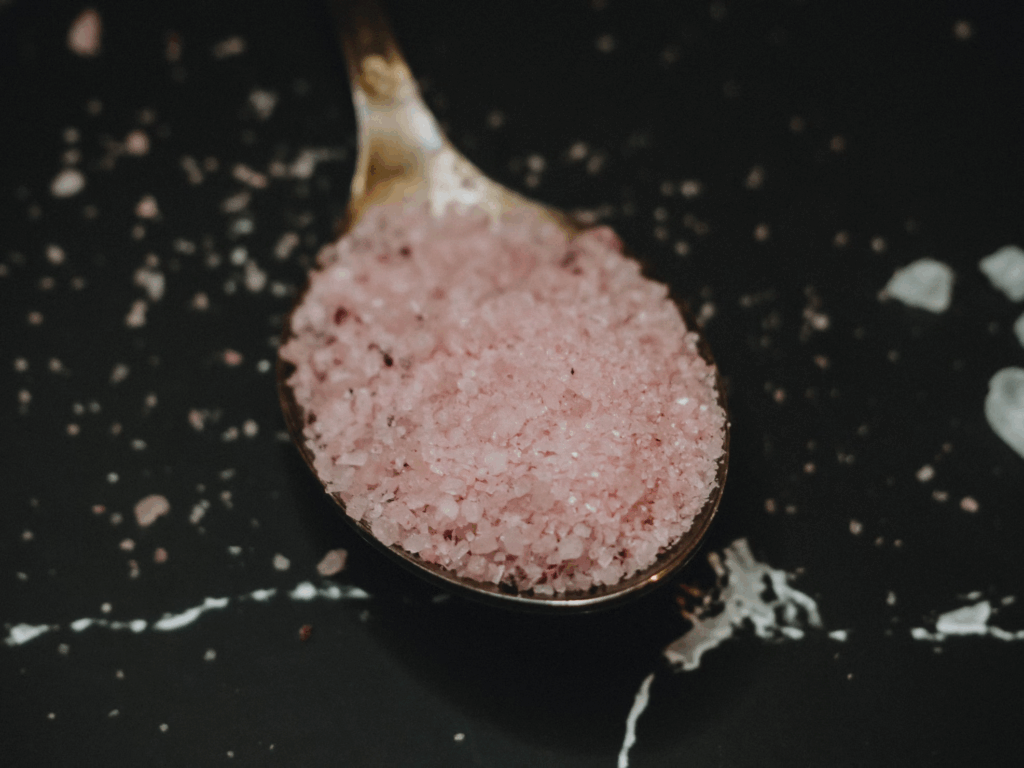
1. Himalayan Pink Salt
Himalayan pink salt is harvested from ancient sea salt deposits found in the Himalayan mountains. It is a popular choice for those looking to reduce their sodium intake because it contains a variety of minerals that are not found in regular table salt.
- Applications: Himalayan pink salt is used in a variety of dishes, including meats, vegetables, salads, and baked goods. It is also commonly used in salt lamps, cooking blocks, and even as a garnish on snacks and desserts.
- Benefits: This salt is often touted as a healthier alternative due to its lower sodium content compared to table salt. It contains beneficial minerals such as potassium, calcium, magnesium, and iron. These minerals help maintain fluid balance, support muscle and nerve function, and improve overall well-being.
Sustainability:
- Himalayan pink salt is a natural, minimally processed product, which makes it a more eco-friendly option than highly processed table salt. However, the environmental impact of mining operations and transportation remains a concern due to its remote source.
Challenges:
- Cost: Himalayan pink salt is generally more expensive than regular table salt, making it less accessible for budget-conscious consumers.
- Taste Profile: Some individuals may find the taste of Himalayan pink salt to be slightly different from regular salt, as it is less “sharp” and more mineral-like.

2. Sea Salt
Sea salt is obtained through the evaporation of seawater and is considered a less processed alternative to regular table salt. It contains trace minerals such as iodine, magnesium, and calcium, which are removed during the refining process in regular table salt.
- Applications: Sea salt can be used in nearly every dish where regular salt is needed. It is commonly used as a finishing salt for meats, seafood, vegetables, and baked goods.
- Benefits: Unlike refined salt, sea salt retains its natural minerals, which may provide additional health benefits. It also contains less sodium than table salt, helping consumers lower their overall sodium intake while still enjoying flavor.
Sustainability:
- Sea salt is harvested through evaporation, which requires minimal processing and energy compared to mined salts. The environmental impact is typically lower than that of mined salts, especially when harvested in eco-conscious regions.
Challenges:
- Mineral Content Variability: The amount of minerals found in sea salt can vary based on where it is harvested, and some varieties may not offer significant nutritional advantages over regular table salt.
- Sodium Content: While sea salt contains some beneficial minerals, it is still high in sodium, so it’s important to use it in moderation, especially for individuals with high blood pressure or those managing sodium intake.
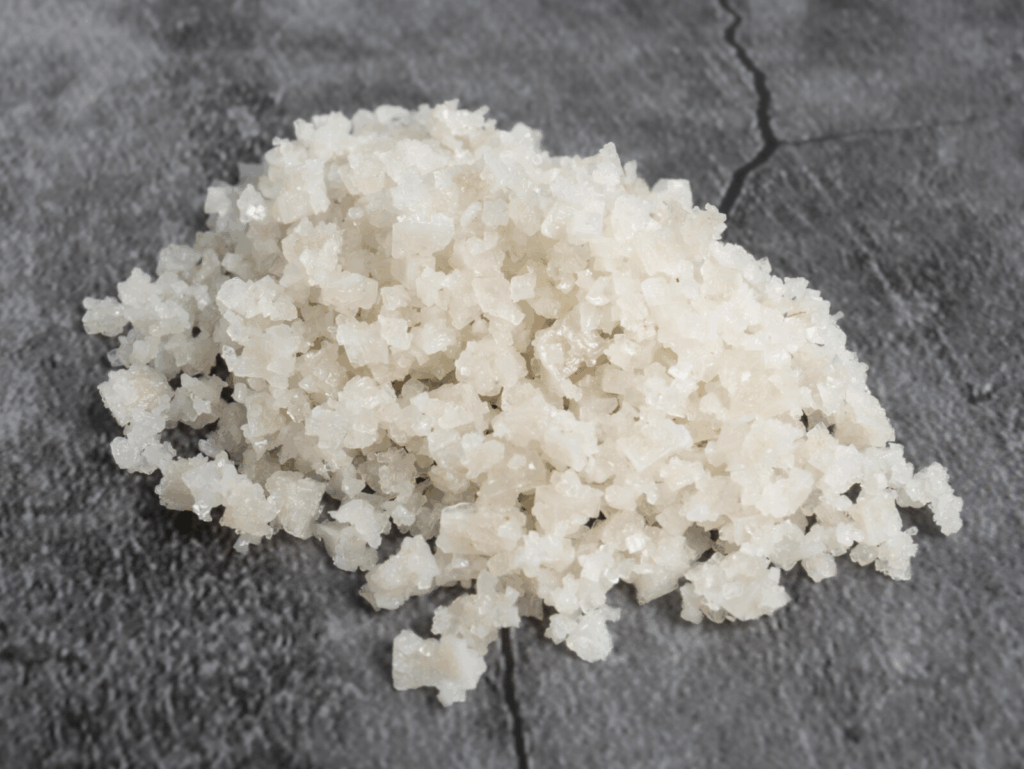
3. Celtic Sea Salt
Celtic sea salt is another natural sea salt alternative that is hand-harvested from coastal regions in France. It is unrefined and contains a high concentration of trace minerals, similar to Himalayan pink salt.
- Applications: Celtic sea salt is versatile and can be used for cooking, as a seasoning for salads, vegetables, or meats, and as a finishing salt for a more refined flavor.
- Benefits: It contains a variety of essential minerals, including calcium, magnesium, and potassium. These minerals help regulate hydration, improve bone health, and support cardiovascular function.
Sustainability:
- Celtic sea salt is often produced through sustainable harvesting practices, where the natural crystallization process of seawater is used to extract the salt. It is typically less processed, making it an environmentally friendly choice compared to regular salt.
Challenges:
- Cost: Celtic sea salt is usually more expensive than regular salt due to its hand-harvesting process.
- Moisture Content: Due to its higher moisture content, Celtic sea salt may not have the same shelf life as regular salt and may need to be stored in air-tight containers to prevent clumping.

4. Potassium Chloride
Potassium chloride is one of the most common salt alternatives that can be used to replace sodium chloride (table salt). It contains potassium, which can help reduce blood pressure by counteracting the effects of sodium.
- Applications: Potassium chloride can be used as a direct substitute for table salt in most recipes. It is especially useful for individuals looking to lower their sodium intake while maintaining flavor in foods like soups, salads, and baked dishes.
- Benefits: Potassium is an essential mineral that helps manage fluid balance, muscle function, and nerve transmission. Replacing sodium with potassium chloride helps reduce the risk of hypertension and cardiovascular disease.
Sustainability:
- Potassium chloride is often mined from natural deposits, which has a lower environmental impact compared to refining salt from seawater. However, the mining process can still involve energy-intensive operations.
Challenges:
- Taste: Some consumers find that potassium chloride has a slightly bitter or metallic aftertaste compared to regular salt. This can be reduced by blending it with other herbs and spices.
- Health Concerns: While potassium chloride is beneficial for reducing sodium, excessive potassium intake can be harmful, especially for individuals with kidney disease or those who are on potassium-restricted diets.
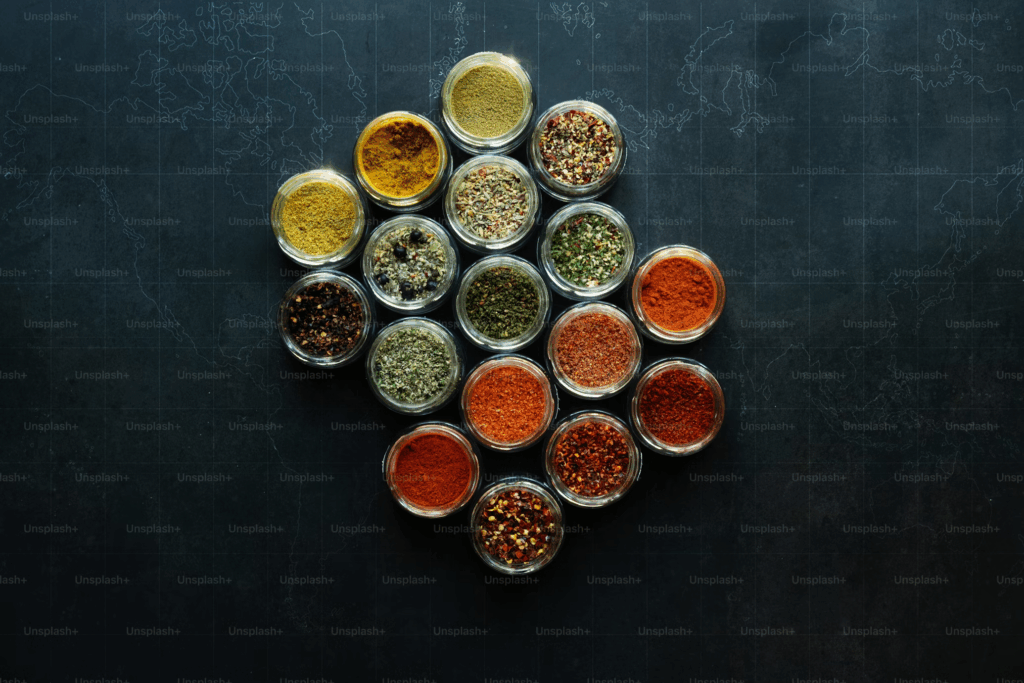
5. Herb and Spice Blends
A great way to replace salt is by using herb and spice blends to flavor food. These blends can include garlic, onion powder, cumin, paprika, and other flavorful herbs such as basil, thyme, and oregano.
- Examples: Mrs. Dash, Flavor God, and homemade blends like garlic salt (without added salt).
- Applications: Herb and spice blends can be used to season meats, vegetables, soups, salads, and even popcorn. The possibilities are endless.
- Benefits: Using herbs and spices not only enhances flavor but also provides health benefits. Many herbs and spices are rich in antioxidants, anti-inflammatory compounds, and essential vitamins.
Sustainability:
- Herbs and spices are generally more sustainable than traditional salt due to their plant-based nature. Growing herbs and spices typically requires fewer resources compared to mining and refining salt.
Challenges:
- Taste Preferences: While herbs and spices provide robust flavors, they might not fully replicate the savory, salty taste that many people crave. Mixing herbs with small amounts of salt can be a solution for those still seeking the taste of traditional salt.
- Cost: High-quality organic herbs and spices can be expensive, especially when buying in smaller quantities.
Sustainability of Salt Alternatives
The sustainability of salt alternatives varies, with many options offering benefits over regular table salt in terms of environmental impact:
- Himalayan pink salt, sea salt, and Celtic sea salt are typically less processed than table salt, making them more environmentally friendly. However, mining operations—particularly for Himalayan salt—can have environmental consequences, including habitat destruction and water usage.
- Potassium chloride and herb blends are generally more sustainable options. Potassium chloride, while mined, often comes from natural sources with minimal environmental disruption. Herb and spice blends are a great eco-friendly choice, as they require fewer resources to grow compared to salt production.
By making informed choices, such as opting for sustainably sourced sea salts or using herb and spice blends, consumers can enjoy flavorful foods while minimizing their environmental impact.
Challenges of Salt Alternatives
Although salt alternatives offer numerous health benefits, there are challenges to adopting them in everyday life:
1. Taste Preferences
- Some consumers find that salt alternatives like potassium chloride or herb blends do not fully replicate the savory flavor of sodium chloride. This makes it harder for them to fully embrace these substitutes.
2. Cost
- Many salt alternatives, especially those like Himalayan pink salt and Celtic sea salt, can be significantly more expensive than table salt. This can be a barrier for cost-conscious consumers.
3. Health Concerns
- While potassium chloride can be a great alternative to sodium chloride, excessive potassium intake can be dangerous, particularly for individuals with kidney disease or those on a potassium-restricted diet.
Choosing salt alternatives is a great way to improve your health by reducing sodium intake while still enjoying flavorful food. Whether you opt for Himalayan pink salt, sea salt, potassium chloride, or herb and spice blends, there are numerous options that support healthier eating habits and contribute to a more sustainable food system.
Despite the challenges of taste preferences, cost, and health concerns, the benefits of switching to salt alternatives—from lowering blood pressure to enhancing the flavor of meals with fewer negative health impacts—are significant. With growing interest in health and sustainability, salt alternatives are likely to become more accessible, cost-effective, and mainstream in the future.

